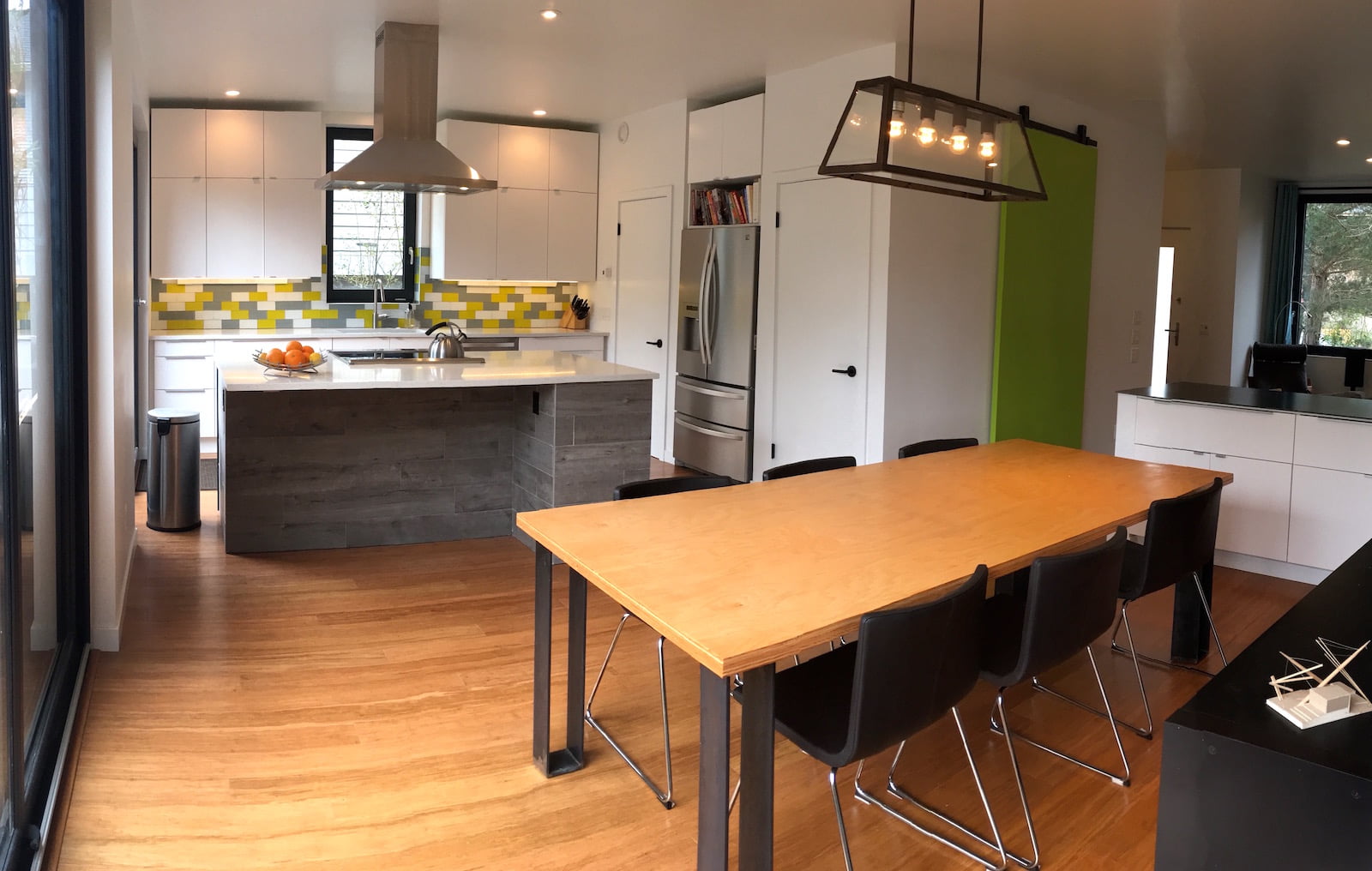One of the most common complaints about zero energy homes is that they’re too expensive to build. With the added cost of extra insulation, thicker windows and doors, advanced heating and cooling systems, and solar panels, many people come to the conclusion that a zero energy home is simply outside of their budget.

Tony Hansen, Abode Builders, Seattle Washington
This is a familiar line to Tony Hansen, a builder in Seattle whose company focuses on zero energy homes. When Hansen first started experimenting with zero energy construction, his main goal was to find a way to make these super-efficient homes accessible to his average customer.
Hansen was raised in Ballard, a historic Scandinavian enclave in Seattle, by his Norwegian grandparents. Hansen’s grandfather was a fisherman who taught his grandson how to build, the value of working with your hands, and that making do with what you have requires a good deal of creativity. These are all values that helped Hansen bring down the cost of zero energy construction, which has, in turn, helped him to recruit a wider base of customers. Here are five strategies that Hansen’s company, Abode Builders, uses to minimize costs on a zero energy home:
- Give more attention to design: Much of zero energy design involves thinking carefully about where your house sits in relation to its surroundings. For example, the majority of a house’s windows should face south to take advantage of solar heat gain in the winter. But in the sunny months of the summer, it is important that the south-facing windows have adequate shading to prevent overheating. The roof should be pitched at the correct angle to maximize exposure for solar panels, and the house should have a simple shape, reducing surface-area-to-volume ratio, and cutting down on heat loss. Less complex homes cost less to build because they require less labor and materials in the construction process. The cost of incorporating these energy-saving features into your design is minimal.
- Prioritize the envelope: For customers who are working within a limited budget, Hansen recommends investing as much as possible in the home’s thermal envelope. It is much more difficult and expensive to renovate the insulation or windows after a house has been built. For some people, spending extra money on the envelope might mean sacrificing other finishes that they may have had on their wish list, such as hardwood floors or granite countertops. Hansen helps his clients prioritize energy-saving features while sourcing beautiful, and functional finishes that won’t blow the budget.
- Scale back on size: Many of Hansen’s clients have scaled back on overall square-footage in order to make room in their budget for some of the more expensive zero energy features, such as a heat pump or solar panels. Reducing the size of a home does not lead directly to a proportionate reduction in costs, because some costs, such as utility hookup fees, are the same no matter how big a house is, but the principle is sound: smaller houses cost less to build, maintain, heat, and cool, freeing up money to invest in energy-saving features.
- Delay some of the larger ticket items: When Hansen builds a new home, he helps his clients decide which energy-saving features they can afford right away, and which features they can postpone. If the investment in solar panels is too much for a client, Abode will wire the home so that it’s “solar ready.” Other customers have saved money by purchasing their energy-efficient appliances on Craigslist. For Hansen, it often comes back to those valuable lessons he learned from his grandfather – do the best you can with what you have.
- Build efficiently: Abode Builders likes to build zero energy homes with structural insulated panels (SIPs), a modular wall system that is manufactured locally in Puyallup, Washington. They’re pre-cut and extremely precise, which makes for almost no construction waste. Trucked to the site, they’re quickly assembled by a seasoned crew and an expert crane operator. The efficiency of this process reduces the cost of labor.
Abode’s most recent zero energy project was a new house in the Fremont-Ballard neighborhood, not far from where Hansen grew up. By employing a combination of the strategies above, the total cost of construction (excluding site costs and solar panels) came in at $215 per square foot, which is the average cost of new construction in Seattle. But this home is much more energy efficient, so its owners will save considerable money on their energy bills starting on the day they move in.
This home was featured in the Northwest Eco Building Guild’s Green Home Tour, and drew more than 280 visitors.
Hansen’s company started building its first net zero energy home four years ago. “It has been a challenging, exhausting, and rewarding journey,” he said, “but one house at a time we’re making zero energy homes a reality.”


Ted clifton says:
Nice work, Tony!